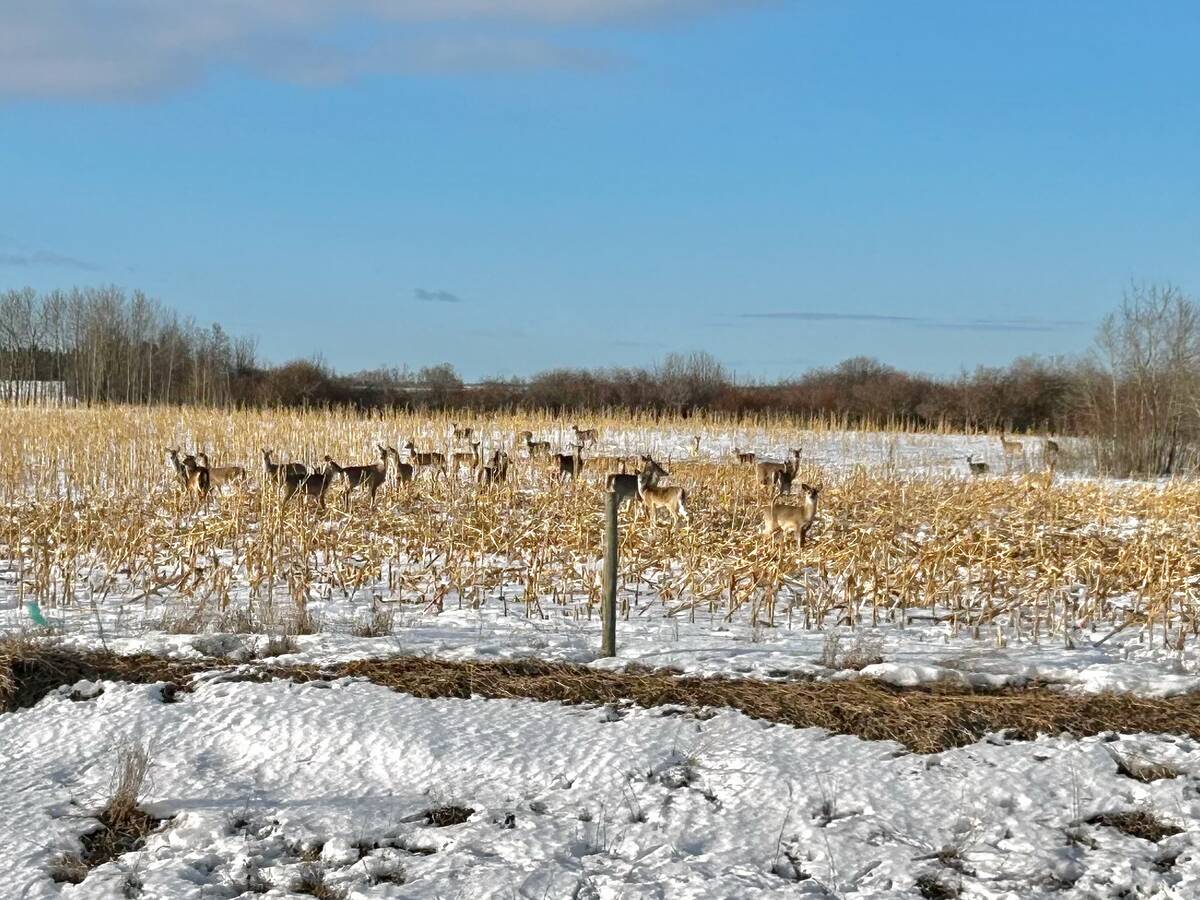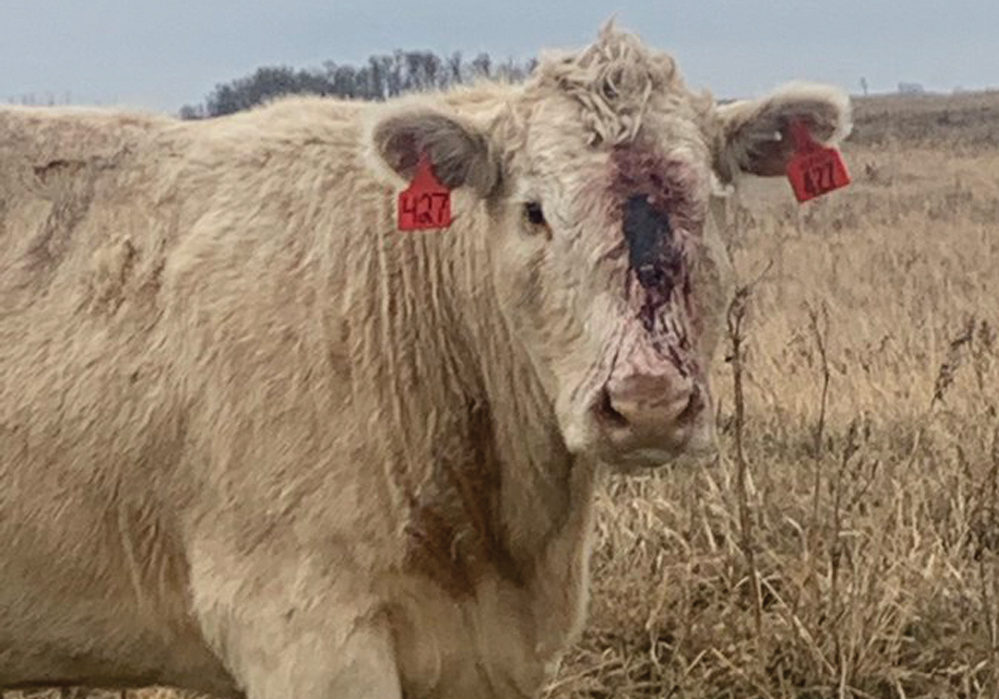Cattle producers and wildlife officials say occurrences of spotlighting — use of artificial lights pointed into the eyes of big game animals while hunting at night — is on the rise and it’s raising fears in rural Manitoba.
A spokesman for the Manitoba Wildlife Federation (MWF) said even back in July they were hearing reports from landowners and conservation officers that it’s occurring more frequently.
Callers to MWF complain they hear shots at night sometimes more than once and they seem to be closer to their properties.
Read Also

Five new CWD cases confirmed in Manitoba
Chronic wasting disease (CWD) has been found in five more Manitoba deer, including in two new municipalities without previous cases of the disease.
“I don’t think anyone knows why,” said Rob Olson, managing director for the MWF. “Some of the landowners say they’re getting bolder and that they’re getting more and more aggressive and shooting closer and closer to farms.”
Across province
These are landowners near big game habitat, said Olson, adding calls have come in from Fisher Branch, Winnipegosis, Swan River, Carberry and eastern Manitoba. It is frightening rural residents, Olson said.
“They’re afraid. They hear the shots going off at night and they wonder where the bullets are going,” he said. “They’re dealing with this constant threat of harm.”
Cattle producers also report finding dead animals, including both their own livestock or big game the spotlighter shot but couldn’t find in the dark. Fences have been cut and farmers find ruts in their fields from vehicles sent out looking for downed animals.
Manitoba Beef Producers is very concerned and wants something done about it, said Brian Lemon, general manager for MBP, adding the matter regularly comes up at district meetings.
“It’s certainly a concern, as is any sort of illegal hunting,” he said. “You hear a rifle going off and it’s unnerving. It’s a growing concern. You go out to check your herd and you’ll find animals that were mistakenly taken down overnight.”
Lemon said MBP agrees 2016 has been an especially bad year and fears the worst if something isn’t done about it.
Legal practice
Spotlighting is most often done from a vehicle and very often from roads, highways and trails. It is currently legal in Manitoba for indigenous hunters on Crown lands or private land where they have the right of access. However, it is not legal from a numbered provincial road or a vehicle.
The federation wants the practice banned entirely in agro-Manitoba, or areas that are agricultural, developed and populated where there is a risk to public safety.
The new provincial government said this spring it was committed to banning unsafe hunting practices including spotlighting, and has given that mandate to the new Minister of Sustainable Development Cathy Cox.
Stepped-up enforcement efforts as per the recent blitz in eastern Manitoba have turned up four hunting parties hunting illegally in the closed moose hunting zone of Game Hunting Area 26 in Nopiming Provincial Park. That shows what enforcement can accomplish, but it also reveals how intense illegal hunting activities has become, Olson said.
More enforcement
To bring this to an end, the province needs to start investing again in rural law enforcement — namely, more conservation officers — and move ahead with the ban government promised to implement, he said.
One of the reasons this has been such a bad year is that those spotlighting figure with fewer officers out there they can get away with it, he said.
“We need stricter laws and we need more humans enforcing this,” he said. “And that ban has to happen. We need them (the provincial government) to move on it and do the work required to get that done. That requires meaningful authentic consultation with First Nations and now Métis hunters. Until the province gets busy with that work they can’t move ahead on this ban that they promised.”
As part of its NightWatch campaign, the MWF has been pushing the Manitoba government to work more closely with indigenous hunters to create a new night-hunting policy that is amenable to the Aboriginal hunting community. A news release by the federation also said it finds the vast majority of Aboriginal hunters also wants safe and sustainable hunting practices and is against spotlighting.
















